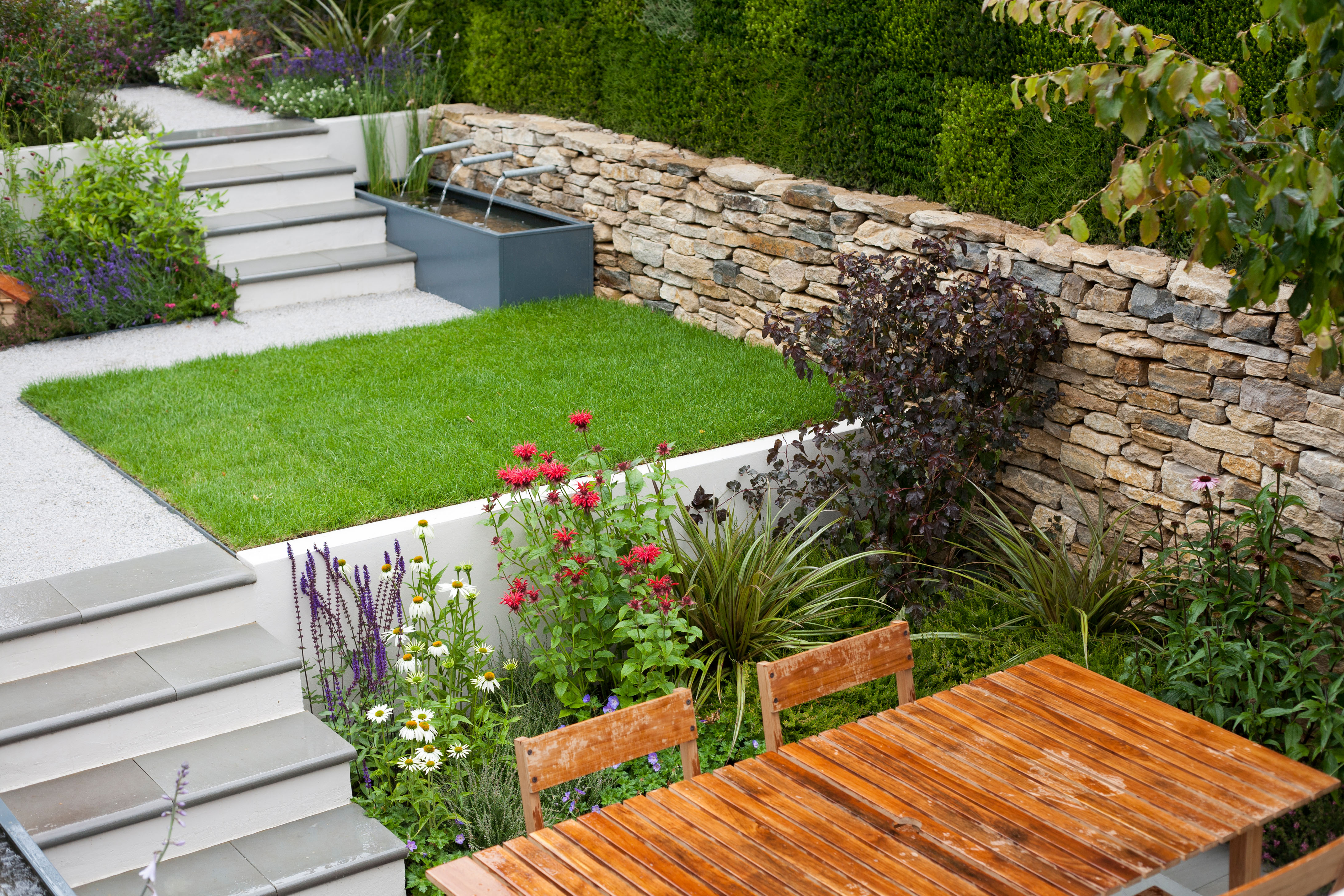How to keep your lawn healthy during winter – 4 expert tips to implement now for luscious grass all year round
Keeping your lawn looking healthy during winter isn't easy, but this lawn care expert has some simple tips to help maximize sunlight and promote growth


During the change of seasons, our backyards deserve a little more attention than usual. As the nights draw in and the weather gets colder we start preparing our outdoor spaces for the long winter months ahead. Planting bulbs, fleecing shrubs, and pruning trees are all gardening tasks we tend to do in the fall to keep our modern garden ideas looking beautiful, but one area we often overlook is the lawn.
Despite being such an integral part of our backyards (and usually making up for most of their area), we forget to prepare our lawns for the colder months. Since the growth of our grass slows down, we assume that our lawns no longer require as much attention. However, most lawns need around four hours of sunlight each day to stay healthy and so, with wet winter weather and shorter daylight hours, our grass suffers.
If you regularly walk across your lawn or own pets, you'll be all too aware of the struggle - your lawn likely turns into a boggy, muddy mess that's impossible to upkeep. Even the greenest thumbed among us probably notice sparse patches in their lawn, too. You might blame your lack of gardening knowledge or your inconsistent mowing schedule, but in most cases, the key to improving the health of your lawn is maximizing sunlight.
'Sunlight is important for your lawn as it provides the grass with the energy it needs to grow and be healthy,' says Carlos Real, a lawn care expert and managing director of TotalLawn. 'A lack of sunlight will not only make your lawn patchy and pale, but it will also weaken the grass and in some cases cause it to die.'
Fortunately, there are plenty of measures you can do to prevent damage to your lawn, and for the most part, they're easy and inexpensive. We spoke with Carlos to learn his best lawn care tips to implement now so you can keep your lawn looking luscious this winter.
1. Minimize mowing

You don't need to be a gardening expert to know that your lawn won't need mowing as regularly during winter. As the growth rate of your grass slows down, you can cut back your schedule. However, as is the case with other plants in your backyard, trimming your lawn slightly will help encourage growth.
During the depths of winter, it's likely you won't need to mow your lawn at all. Until then, you should pay attention to the cutting height through fall. 'The length in which you cut your grass will affect the process of photosynthesis and the overall health of the grass plant,' explains TotalLawns' Carlos.
The Livingetc newsletters are your inside source for what’s shaping interiors now - and what’s next. Discover trend forecasts, smart style ideas, and curated shopping inspiration that brings design to life. Subscribe today and stay ahead of the curve.
Keep an eye on the areas of your backyard that lack sunlight during these fall months and adjust your mower's cutting height for these shadier areas. 'You should mow ½ an inch higher in comparison to the areas in the sun, as leaving the length of your lawn higher will give the grass plant more area to capture the limited sunlight available,' says Carlos.
2. Avoid overwatering

Our natural instinct when we see our lawns looking lackluster is to give them a big drink. But when it comes to how to keep your garden hydrated this is only likely to do your lawn more harm than good.
'Although the shaded areas of your lawn will still need watering, it’s important not to overdo it,' says Carlos. 'Lawns in shaded areas can hold the moisture for longer compared to parts of your lawn that have access to sunlight. If you overwater your shaded lawn, you’re at risk of a waterlogged lawn, so it’s best to only water it as and when it’s needed.'
It might be worth only watering the areas of your lawn that are in direct sunlight throughout most of the day during fall. Only do so if necessary though; if you've had recent rainfall in your area (at least 1 inch a week) you can skip watering altogether. Small lawns and low-maintenance gardens probably won't need watering at all during fall/winter.
3. Reduce nitrogen levels

Although most people think spring is the most important time to fertilize your lawn, it's vital that you use feed on your lawns during fall, too, for the health of your landscaping all year round.
'Shaded lawns should always be fed before the leaves begin to fall,' Carlos explains. 'You should be switching to a fall/winter feed and using half the amount of nitrogen on your shaded areas than you would where the lawn gets sunlight.'
On the other hand, the amount of phosphorus and potassium you use should be upped for the areas of your lawn that lack sunlight. 'A higher dose of phosphorus and potassium can support healthy growth for those days when sunlight is even more limited,' adds Carlos.
4. Trim back foliage and remove moss

In many cases, shade is simply caused by overgrown trees or foliage elsewhere in your backyard blocking the sun from reaching your grass. The simple solution to this issue is to trim these plants. Shrubs and trees will benefit from fall pruning too as it will encourage fresh growth in the spring. To keep maintenance to a minimum, these are the plants to avoid in a small garden to help maximize sunlight to your lawn.
Weeds and moss can also become a problem for shady lawns, especially as the weather gets colder. As Carlos explains: 'Moss thrives in dark and damp conditions so often outperforms the grass plant in shaded areas.' You might think it looks harmless, but moss quickly spreads and can soon kill your lawn.
'It’s important that you remove moss immediately and keep an eye on it throughout the fall and winter months,' says Carlos. Raking your lawn the simplest method to remove moss, but an iron sulfate fertilizer or a generic moss killer (like this one, from Amazon) will also help you to rid moss from your lawn.
What should I do if my lawn is still unhealthy?

When the new year rolls around, the state of your lawn will be a good indicator of its health. If you're left feeling exasperated after trying everything in your power to keep your lawn looking fresh, it might be time to reconsider your backyard.
According to Carlos: 'If you're finding it hard to keep your lawn healthy and it’s getting almost no sunlight, then it might be a good idea to think about repurposing that part of your backyard, such as a laying some patio down or adding some furniture in a specific area.'
As long as you have enough lawn space in your backyard elsewhere, you might want to turn those shadier patches into a shrub border, a patio seating area, or even an allotment. This is the best way to make the most of your backyard space, and it gives you a great spring gardening project for you to look forward to.

Lilith Hudson is a freelance writer and regular contributor to Livingetc. She holds an MA in Magazine Journalism from City, University of London, and has written for various titles including Homes & Gardens, House Beautiful, Advnture, the Saturday Times Magazine, Evening Standard, DJ Mag, Metro, and The Simple Things Magazine.
Prior to going freelance, Lilith was the News and Trends Editor at Livingetc. It was a role that helped her develop a keen eye for spotting all the latest micro-trends, interior hacks, and viral decor must-haves you need in your home. With a constant ear to the ground on the design scene, she's ahead of the curve when it comes to the latest color that's sweeping interiors or the hot new style to decorate our homes.